Step into 2025, where interior design is not just about aesthetics but a true catalyst for personal transformation. As remote work, wellness, and smart technology take center stage, our living spaces have become more essential than ever.
Launching a home interior project can redefine comfort, boost daily functionality, and even raise your property’s value. This guide will walk you through every phase, from understanding the latest trends to detailed planning, budgeting, and sourcing. You will discover practical steps and expert tips to ensure your home interior project in 2025 is seamless and successful.
Understanding 2025 Home Interior Trends
Staying ahead of the curve is essential for anyone planning a home interior project in 2025. This year’s trends reflect a strong desire for spaces that are sustainable, adaptable, and personalized. Homeowners are making informed choices to create environments that support well-being, functionality, and style.
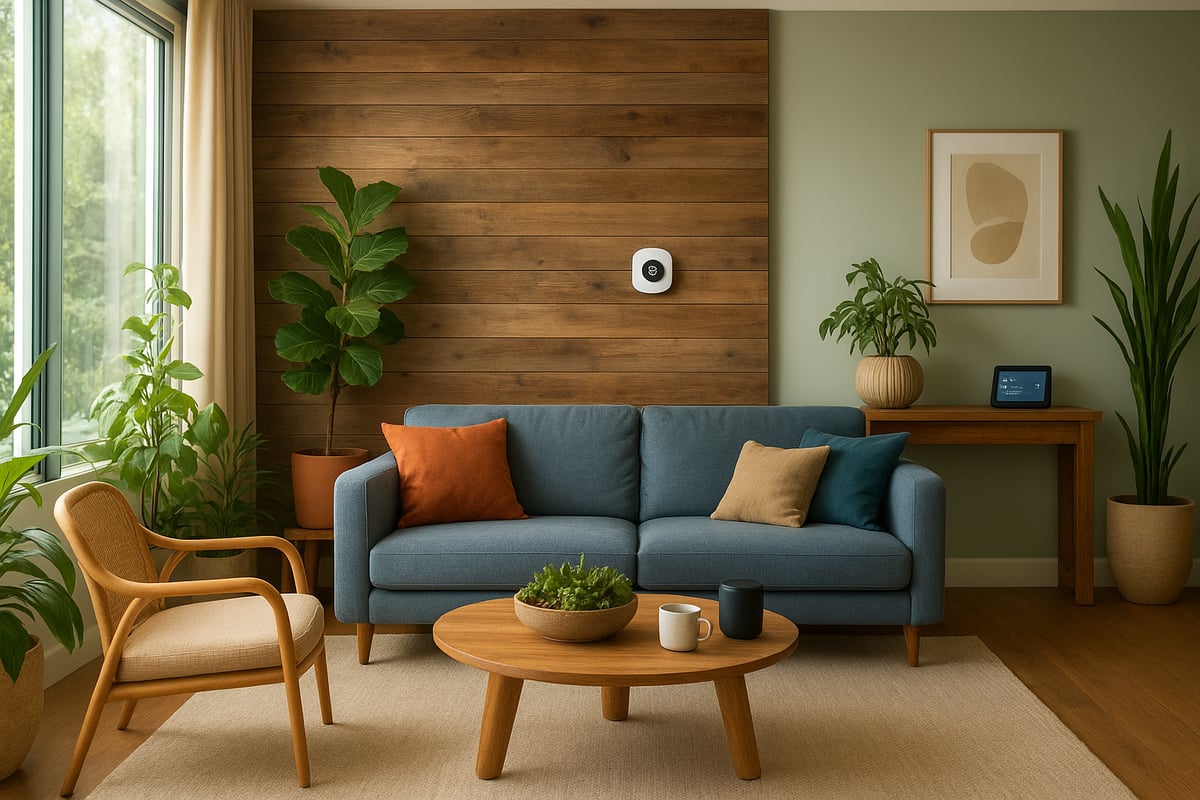
The Shift Toward Sustainable and Eco-Friendly Design
Sustainability is at the heart of every forward-thinking home interior project. In 2024, 65% of homeowners prioritized eco-friendly choices. This includes selecting recycled wood, low-VOC paints, and energy-saving smart thermostats. These materials not only reduce environmental impact but also contribute to healthier indoor air quality and long-term cost savings for your home.
Biophilic Design and Wellness Integration
Biophilic design is transforming how people approach their home interior project. Bringing nature indoors with living walls, abundant plants, and spa-inspired bathrooms boosts both mental health and productivity. Maximizing natural light and designing wellness-focused spaces help homeowners create a calming refuge that supports daily routines and overall well-being.
Smart Home Integration
Technology is seamlessly woven into every successful home interior project in 2025. The rise of IoT devices, voice assistants, and app-controlled lighting systems make daily life more convenient and energy-efficient. The smart home market is expected to reach $182 billion by 2025. Automated features like smart thermostats and custom lighting scenes are now standard in modern homes.
Multifunctional and Flexible Spaces
With changing lifestyles, rooms now serve multiple purposes. Flexible spaces are a must in any home interior project. Examples like Murphy beds and convertible offices allow homeowners to shift between work, relaxation, and family activities. This adaptability ensures every square foot is maximized for comfort and efficiency, meeting the evolving needs of today’s households.
Trending Colors, Textures, and Materials
Color palettes in 2025 showcase earthy tones, calming blues, and bold accent hues. Textures such as velvet, boucle, terrazzo, and mixed metals add depth and character to interiors. Selecting the right mix of colors and materials gives each home interior project a modern yet timeless appeal, ensuring spaces feel fresh and inviting.
Personalization and Unique Touches
Personalization is a defining feature of the modern home interior project. Bespoke cabinetry, custom art, and curated gallery walls allow homeowners to express their individuality. Unique touches, such as handcrafted decor or one-of-a-kind furniture, ensure every space stands out and tells a personal story that resonates with its inhabitants.
Data-Driven Design Decisions
Digital tools are revolutionizing how people plan a home interior project. Online platforms and AR/VR apps allow users to visualize changes before making decisions. By leveraging these resources, homeowners can experiment with layouts and finishes, reducing guesswork and increasing project satisfaction. For a deeper look at these trends, see 2025 Interior Design Trends to Watch.
Step 1: Setting Your Project Goals and Vision
Embarking on a home interior project requires a clear vision and thoughtful planning. Setting the right goals at the start will ensure your design journey is purposeful and rewarding. This foundational step lays the groundwork for transforming your space efficiently and in line with your needs.
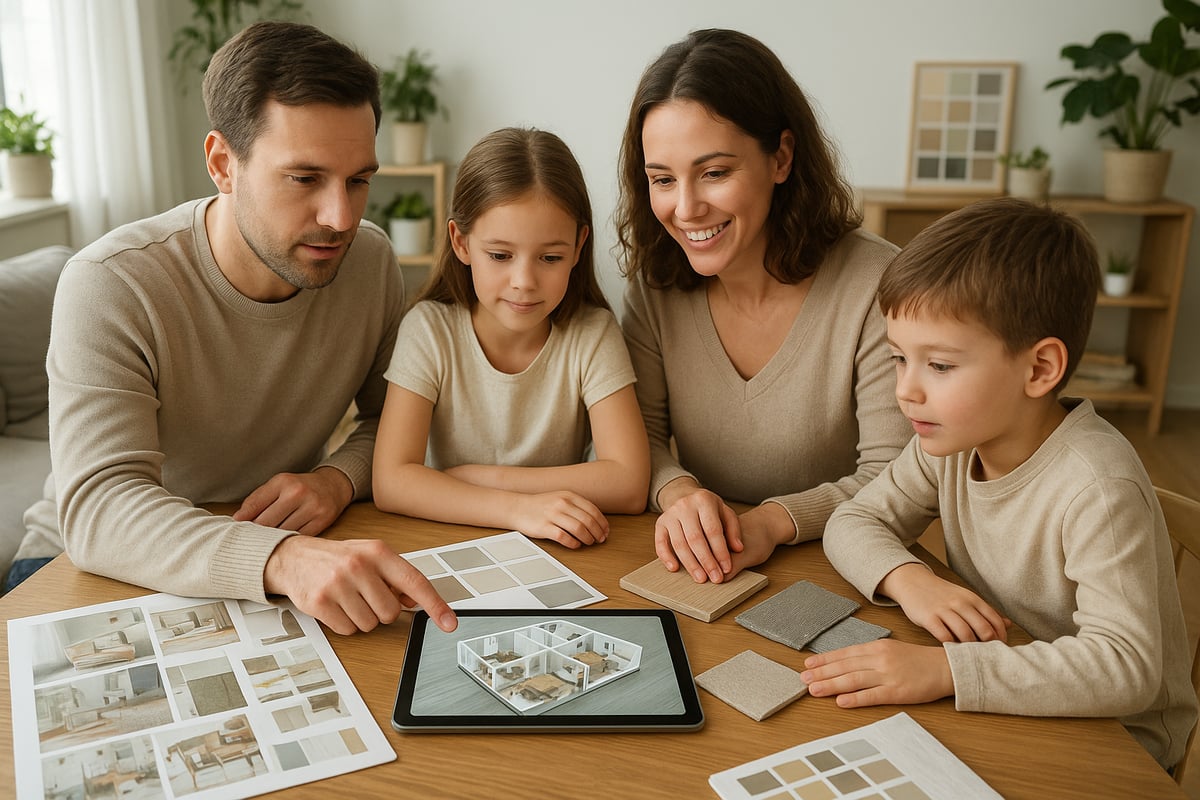
Assessing Your Needs and Lifestyle
Begin your home interior project by evaluating how you currently use your space. Consider daily routines, family activities, and any pain points such as lack of storage, poor lighting, or noise issues.
Ask yourself which rooms feel comfortable, which are underused, and what improvements could make your home more supportive of your lifestyle. For instance, if multiple people work remotely, a dedicated home office may be essential.
By identifying these needs early, you set the stage for a home interior project that truly enhances your daily life.
Defining Your Aesthetic and Functional Goals
Once you understand your needs, define the look and feel you want for your home interior project. Explore design styles like modern, Scandinavian, or mid-century to see which resonate.
Prioritize goals such as maximizing comfort, increasing storage, or creating inviting spaces for entertaining guests. Make a list of must-haves and nice-to-haves to guide your decisions.
Setting both aesthetic and practical objectives ensures your home interior project achieves balance between beauty and function.
Creating a Mood Board and Inspiration File
Gather inspiration by creating a mood board for your home interior project. Use digital tools like Pinterest or Houzz to collect images of rooms, colors, materials, and layouts you admire.
Alternatively, assemble a physical file with magazine clippings, fabric samples, and paint swatches. Both approaches help you visualize your preferences and communicate them clearly.
Mood boards are valuable references throughout your home interior project, keeping your vision focused and cohesive.
Determining Project Scope
Decide whether your home interior project will involve a full renovation or a simple room refresh. Factor in your timeline, budget, and willingness to take on disruptions.
Some homeowners prefer phased projects, tackling one room at a time, while others opt for a complete transformation at once. Be realistic about what you can manage.
Clarifying the scope early helps avoid mid-project changes and keeps your home interior project on track.
Establishing Success Metrics
Set measurable goals to evaluate the effectiveness of your home interior project. Success could be increased comfort, improved energy efficiency, or higher property value.
Consider using surveys before and after the project to gauge satisfaction. Track tangible results, such as lower utility bills or more organized spaces.
By defining metrics, you can assess whether your home interior project delivers the desired outcomes and supports long-term well-being.
Involving Stakeholders
If you share your space with family or roommates, involve them in planning your home interior project. Encourage open discussions to align on shared priorities and resolve differences early.
Use collaborative tools or meetings to gather input and vote on important decisions. This inclusive approach fosters harmony and ensures the final design meets everyone's needs.
Stakeholder engagement is key to a successful and harmonious home interior project.
Documenting Your Vision
Capture your goals, inspirations, and requirements in a detailed project brief. This documentation is vital for communicating with designers, contractors, or anyone involved in your home interior project.
Include room-by-room objectives, preferred materials, and must-have features. For a comprehensive planning approach, explore this Step-by-Step Interior Design Guide to structure your documentation and ensure no detail is overlooked.
Well-organized documentation streamlines your home interior project and helps turn your vision into reality.
Step 2: Budgeting and Financial Planning
A well-structured budget is the backbone of a successful home interior project. Careful financial planning helps you avoid surprises, make informed decisions, and maximize your investment. By following these steps, you can confidently navigate the budgeting process and set your project up for success.
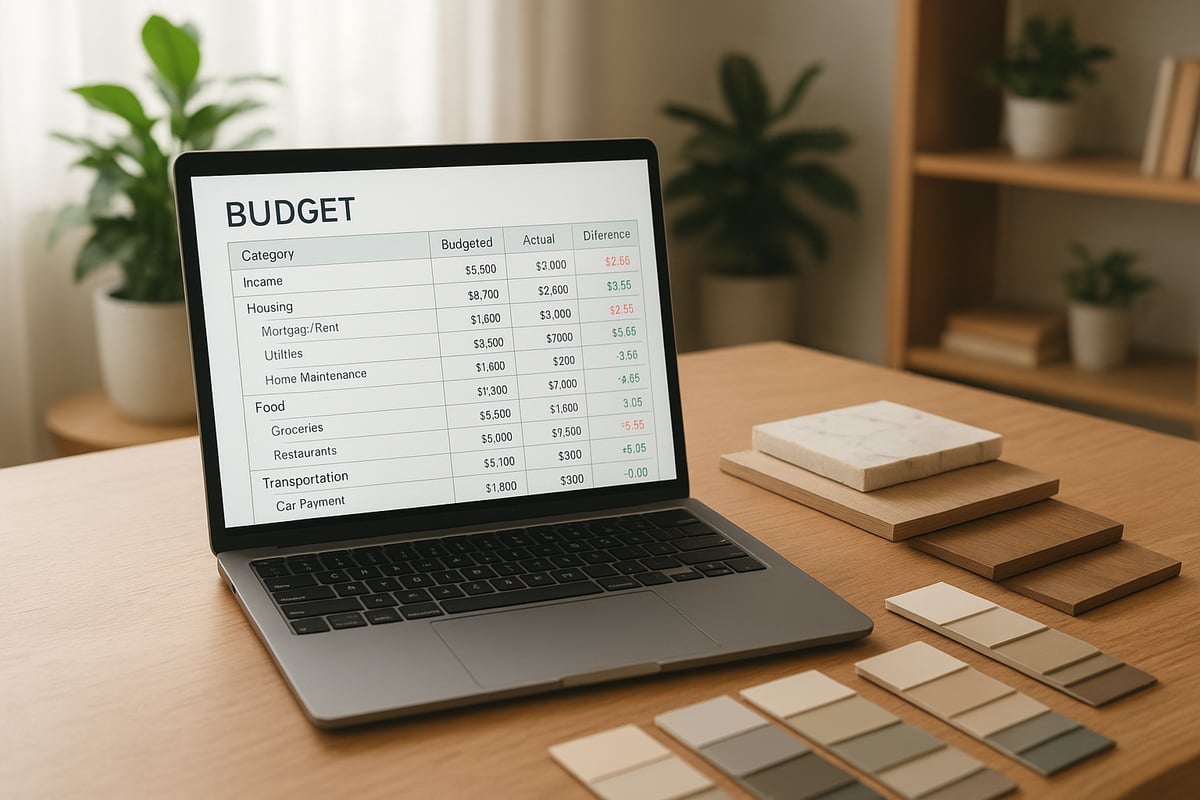
Calculating Your Total Project Budget
Begin by assessing the overall scope of your home interior project. Consider the size of your space, the quality of materials, labor costs, and your location. For example, a living room remodel in 2024 averaged between $8,000 and $15,000. Researching benchmarks and consulting resources like Beginner Home Interior Design Tips can help set realistic expectations. Be sure to include every element, from design fees to contingencies, in your preliminary calculations.
Allocating Funds by Category
Dividing your home interior project budget into categories ensures clarity and control. Typical allocations might include design, materials, furnishings, labor, and a contingency fund. A recommended contingency is 10 to 20 percent to cover unexpected costs. Use a table like the one below to guide your allocations:
| Category | Percentage |
|---|---|
| Design Fees | 10% |
| Materials | 30% |
| Furnishings | 25% |
| Labor | 25% |
| Contingency | 10–20% |
Adjust these percentages based on your specific home interior project goals and priorities.
Cost-Saving Strategies
There are many ways to stretch your home interior project budget without sacrificing quality. Consider a blend of DIY and professional services. Upcycle or repurpose existing furniture, and explore second-hand marketplaces for unique finds. Identify which aspects are worth a splurge, such as built-in storage or energy-efficient upgrades, and where you can economize. Planning ahead and sourcing during seasonal sales can also yield significant savings.
Financing Options
If your home interior project exceeds your available cash, several financing options exist. Home equity loans typically offer lower interest rates, while personal loans provide flexibility. Credit cards can be convenient, but watch for higher rates. Evaluate the pros and cons of each method based on your financial situation and project timeline. Consulting a financial advisor can help you choose the best path for your needs.
Tracking and Managing Expenses
Maintaining real-time oversight of your home interior project costs is essential. Use budgeting apps or spreadsheets to organize expenses by phase or milestone. Monthly check-ins can help you spot overruns early and adjust accordingly. Keep all receipts and invoices in a dedicated folder. This proactive approach ensures you stay on track and within your planned budget while working toward your design vision.
Planning for ROI
Some home interior project improvements offer a higher return on investment than others. Kitchens and bathrooms are known to recoup up to 77 percent of costs, according to Remodeling Magazine. Energy-efficient upgrades, such as new windows or insulation, also increase property value and reduce utility bills. Prioritize elements that enhance comfort, function, and future resale potential when planning your budget allocations.
Avoiding Common Budget Pitfalls
Steer clear of pitfalls that can derail your home interior project budget. Over-customization, scope creep, and hidden fees are frequent culprits. Always factor in potential structural repairs and code requirements. Review contracts closely to avoid misunderstandings. By staying vigilant and flexible, you can manage challenges and achieve your design goals without financial stress.
Step 3: Designing and Planning Your Space
Designing and planning your space is where your home interior project truly comes to life. This step bridges inspiration and execution, ensuring your vision is both beautiful and functional. A thoughtful approach at this stage sets the foundation for a successful transformation and helps prevent costly mistakes later.
Working with Professionals vs. DIY
When planning a home interior project, decide if you’ll hire professionals or take the DIY route. Each option has unique benefits and challenges.
Professional Approach:
- Access to expert knowledge and project management.
- Reliable results for complex renovations.
- Higher upfront costs.
DIY Approach:
- Greater control and potential cost savings.
- Flexibility to work at your own pace.
- Steeper learning curve and time investment.
Use this table to compare:
| Aspect | Professionals | DIY |
|---|---|---|
| Cost | Higher | Lower |
| Quality | Consistent | Varies |
| Time | Faster | Slower |
| Stress | Lower | Higher |
For major changes, such as structural updates, professionals are essential. For decor or small updates, DIY can work well. Always align your choice with the scale and complexity of your home interior project.
Space Planning and Layout Optimization
Effective space planning is the backbone of any home interior project. Start by assessing your room’s dimensions and traffic flow. Use tools like CAD software, online planners, or even graph paper to sketch layouts.
Digital planning platforms let you visualize furniture arrangements before making purchases. For example, 3D CAD tools allow you to experiment with open-concept versus defined spaces, ensuring each area serves its intended function. If you’re new to digital design, Using 3D CAD for Home Projects offers accessible resources to help you get started.
Remember to account for natural light, door swings, and circulation paths. A well-planned layout maximizes comfort, efficiency, and the overall success of your home interior project.
Selecting Materials and Finishes
Choosing the right materials is crucial for durability, maintenance, and style in your home interior project. Prioritize eco-friendly options, such as recycled wood, low-VOC paints, and sustainable textiles.
When comparing materials, consider:
- Maintenance needs (e.g., quartz countertops vs. natural stone).
- Longevity and resistance to wear.
- Cohesion with your overall design vision.
Request samples before making final decisions. This step ensures your selections complement each other and meet the practical demands of your daily life.
Lighting Design for Ambience and Functionality
Lighting design transforms the mood and usability of your home interior project. Layer three types of lighting for best results:
- Ambient: General illumination for the whole room.
- Task: Focused light for reading, cooking, or work.
- Accent: Highlights art or architectural features.
Smart lighting systems provide flexibility, allowing you to adjust scenes for different activities. Place switches and outlets thoughtfully to support both function and future upgrades.
Choosing Furniture and Decor
Furnishing your home interior project means balancing style, comfort, and scale. Start with key pieces, such as a modular sofa or a statement dining table. Ensure each item fits the room without crowding it.
Personal touches, like custom art or unique lighting, add character. Mix textures and materials for depth. When possible, choose modular or multi-use pieces to accommodate changing needs.
Integrating Technology Thoughtfully
Technology can enhance your home interior project when integrated seamlessly. Plan for smart home hubs, concealed charging stations, and built-in speakers during the early design phase.
Consider:
- Placement of outlets and cable management.
- Compatibility with future devices.
- Ease of use for all residents.
Thoughtful tech integration ensures your space is both modern and user-friendly.
Ensuring Accessibility and Universal Design
A successful home interior project is welcoming to everyone. Universal design features, such as wider doorways, lever handles, and step-free entries, support aging in place and multi-generational living.
Other considerations include:
- Adjustable-height counters.
- Non-slip flooring.
- Clear pathways for mobility aids.
These features not only improve daily living but also boost long-term property value.
Creating Detailed Design Documentation
Documenting every detail is vital for a smooth home interior project. Prepare floor plans, elevations, and material schedules to communicate your vision clearly to contractors and suppliers.
A comprehensive project brief should include:
- Design style references and mood boards.
- Lists of selected materials and finishes.
- Specific requirements for lighting, tech, and accessibility.
Proper documentation reduces misunderstandings, streamlines approvals, and helps you stay on track from concept to completion.
Craft’n Build Design Co.: CAD Design and Online Learning Solutions for Home Interior Projects
Craft’n Build Design Co. simplifies the design phase of your home interior project with downloadable 3D CAD models and curated design collections. Their platform enables you to test multiple layouts, experiment with styles, and make informed choices before committing.
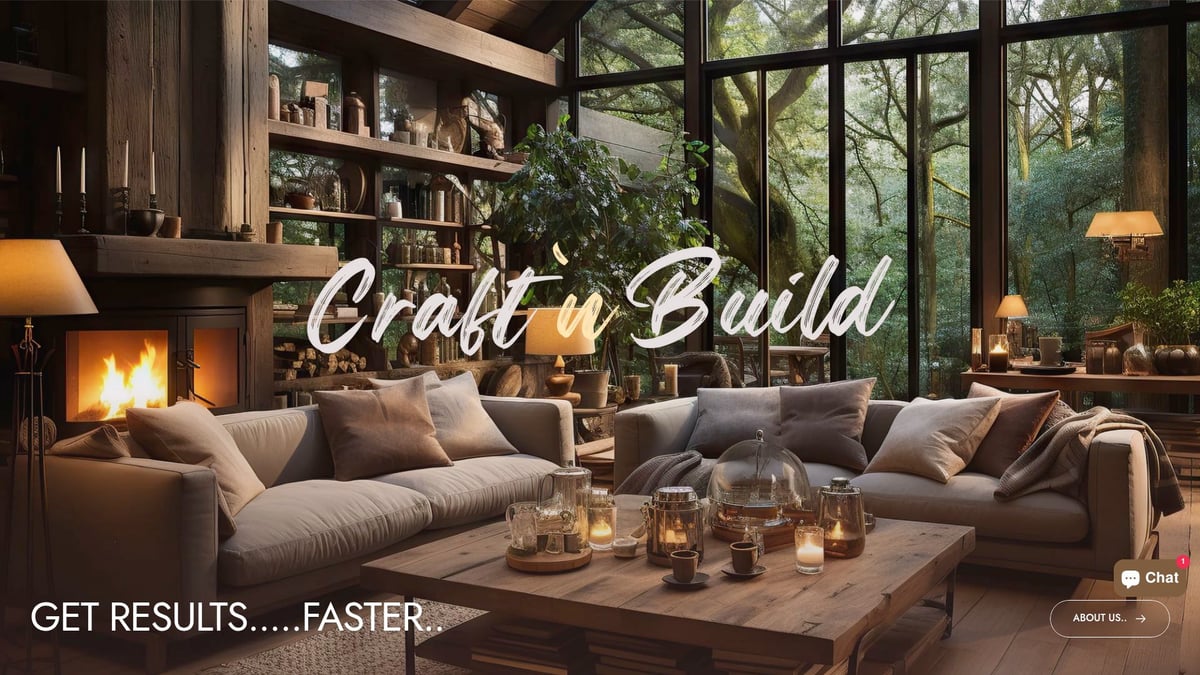
Online courses are available for those wanting to learn interior design skills at their own pace. Custom services and global support ensure every home interior project receives expert guidance, no matter your location or experience level.
Step 4: Sourcing Materials, Furniture, and Decor
A thoughtful sourcing strategy is essential for any home interior project. The right suppliers, materials, and furnishings can make or break your vision, so careful planning is key. In this stage, you will learn how to navigate choices, evaluate quality, and secure the best pieces for your space.
Researching and Comparing Suppliers
Start your home interior project by exploring both online marketplaces and local showrooms. Each source has unique benefits and challenges. Online platforms offer broad selections and competitive pricing, while local retailers provide personal service and the ability to see items firsthand.
| Supplier Type | Pros | Cons |
|---|---|---|
| Online | Wider selection, convenience, reviews | Shipping costs, can't inspect |
| Local Showroom | In-person viewing, expert advice | Limited stock, higher prices |
Take time to compare warranties, return policies, and delivery options before making decisions.
Evaluating Quality and Sustainability
Quality and sustainability are top priorities for any home interior project. Look for certifications such as FSC for wood, GREENGUARD for low emissions, and OEKO-TEX for textiles. Sustainable choices, like recycled fabrics or responsibly sourced wood, not only benefit the environment but also enhance your home's health and value.
- FSC (Forest Stewardship Council)
- GREENGUARD Certification
- OEKO-TEX Standard 100
Request material samples when possible to assess durability and color.
Custom vs. Ready-Made Solutions
Deciding between custom and ready-made pieces depends on your space, needs, and budget. Custom furniture is ideal for unusual layouts or when you want a unique statement. Ready-made options are often more affordable and readily available. As highlighted in Interior Designers Predict These Will Be The 15 Hottest Interior Design Trends In 2025, bespoke interiors and personalized touches are trending, making custom solutions a smart choice for those seeking distinction in their home interior project.
For challenging spaces, consider built-ins or modular designs.
Timing and Lead Times
Managing lead times is crucial for a smooth home interior project. Average furniture orders can take 10 to 16 weeks to arrive, especially for custom or imported items. Create a detailed sourcing timeline that includes order, shipping, and delivery estimates. This proactive approach helps prevent costly delays and keeps your renovation on track.
Confirm estimated delivery windows with all suppliers before placing orders.
Sourcing Unique and Vintage Items
Incorporating unique or vintage pieces adds depth and character to your home interior project. These finds can be discovered at antique shops, estate sales, or specialty online retailers. According to 11 Home Design Ins and Outs for 2025, According to Thumbtack, personalized spaces and one-of-a-kind decor are increasingly valued, making vintage sourcing especially relevant.
Upcycling or refinishing vintage items can also be cost-effective and eco-friendly.
Negotiating and Securing the Best Deals
Smart negotiation can stretch your home interior project budget further. Ask suppliers about seasonal sales, bulk order discounts, or free shipping options. Many retailers offer price matching or loyalty rewards for repeat customers.
- Shop during major holiday sales
- Inquire about floor model discounts
- Leverage bulk purchases for savings
Keep receipts and correspondence for future reference.
Coordinating Deliveries and Storage
Coordinating deliveries is vital, especially during renovations. Stagger shipments based on your renovation phase, and consider temporary storage solutions if your timeline is extended. Storage pods or offsite facilities can protect items until you are ready to install them.
Clear communication with suppliers and contractors ensures items arrive safely and on schedule.
Step 5: Executing Your Home Interior Project
Embarking on the execution phase of your home interior project is where vision turns into reality. Careful planning pays off as you transition from design to action. This stage requires attention to detail, proactive communication, and flexibility to ensure your home interior project delivers the results you envisioned.
Preparing for Construction or Installation
Before any work begins, set a clear timeline for your home interior project. Develop a detailed checklist to track progress and responsibilities. Use project management tools like Gantt charts or digital apps to allocate tasks and deadlines.
- List all tasks, from demolition to final touches.
- Assign roles for each phase.
- Schedule regular progress reviews.
Proper preparation reduces surprises and keeps your home interior project on track, ensuring every stakeholder knows what to expect at each stage.
Working with Contractors and Tradespeople
Choosing the right professionals is crucial for your home interior project. Vet contractors by checking references, licenses, and portfolios. Conduct interviews to assess communication style and expertise.
- Request detailed written contracts.
- Clarify scope, payment schedules, and timelines.
- Establish communication channels (email, group chats).
Open, respectful dialogue minimizes misunderstandings and helps your home interior project proceed smoothly from start to finish.
Overseeing the Project: Quality Control and Problem Solving
Monitor every aspect of your home interior project with regular site visits and progress checks. Use a punch list to document items requiring attention before completion.
- Inspect work quality at each milestone.
- Address any issues promptly with your team.
- Keep a log of changes or challenges.
Effective oversight ensures your home interior project meets your standards and allows you to resolve problems before they escalate.
Managing Disruptions and Living Through Renovations
Renovations can disrupt your routine, but thoughtful planning makes a difference. Set up temporary living spaces or kitchens to maintain daily life during your home interior project.
- Designate safe zones away from work areas.
- Communicate renovation schedules with all household members.
- Plan for dust, noise, and limited access.
By anticipating challenges, you can minimize stress and keep your home interior project as comfortable as possible throughout the process.
Final Styling and Staging
As construction wraps up, it's time to layer in decor and personal touches. Arrange furniture, art, and accessories to create a cohesive, inviting atmosphere.
- Use a mix of textures and colors for depth.
- Consider professional staging for a polished look.
- Add biophilic elements for wellness, as detailed in Biophilic Interior Styles Explained.
Final styling adds the personality and warmth that makes your home interior project truly shine.
Post-Project Evaluation and Maintenance Planning
Once your home interior project is complete, conduct a thorough evaluation. Check for defects, ensure all systems work, and review warranties.
- Schedule routine maintenance for finishes and appliances.
- Create a maintenance calendar.
- Document any issues for follow-up.
Ongoing care protects your investment and keeps your home interior project looking its best for years to come.
Celebrating Your Transformed Space
Celebrate the completion of your home interior project with a housewarming event or reveal party. Capture before-and-after photos to appreciate the transformation.
- Invite friends and family to share in your accomplishment.
- Display project photos in a dedicated album.
- Reflect on the journey and results.
Taking time to celebrate acknowledges the effort and creativity poured into your home interior project.
Learning from the Process for Future Projects
Reflect on what worked well and what could be improved in your home interior project. Record lessons learned and update your vision for future endeavors.
- Keep a project portfolio with notes and photos.
- Share experiences with others planning similar projects.
- Stay updated on evolving trends, such as those highlighted in Home Interior Design Trend Alert: 2025 Is The Homebody Era.
Continuous learning ensures each home interior project is better than the last, fueling growth and satisfaction.
Now that you have a clear roadmap for transforming your home interior in 2025—from defining your vision to choosing materials and executing your plan—you might be wondering how to take the first practical step. If you’re ready to elevate your design skills and make confident decisions throughout your project, why not invest in professional guidance that fits your pace? You can build a strong foundation in style, space planning, and functionality with expert-led instruction. Take the next step toward your dream home and Get started with Interior Design.

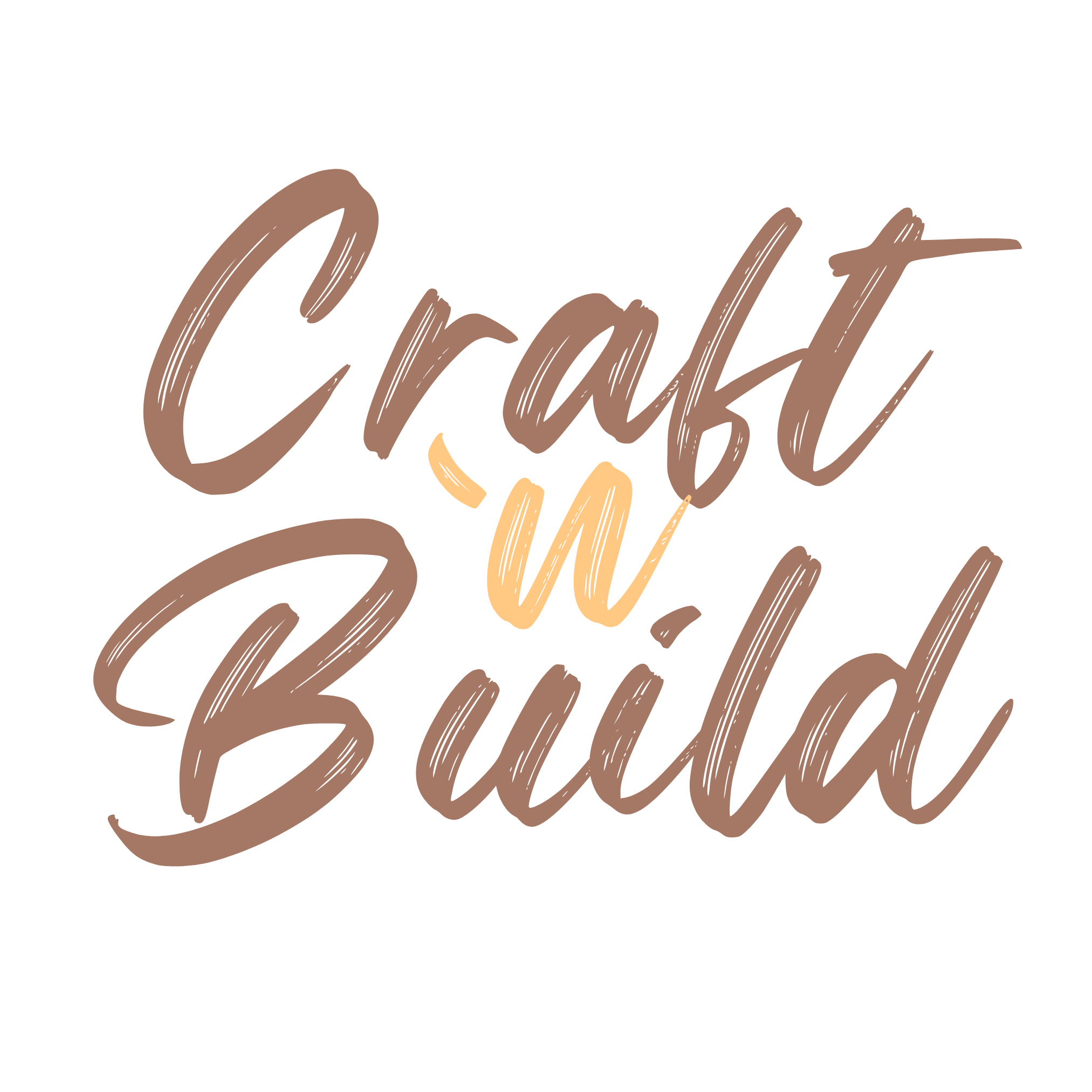




Partager:
beginner home interior design guide 2025
9 Essential Type of House Decor Styles to Try in 2025